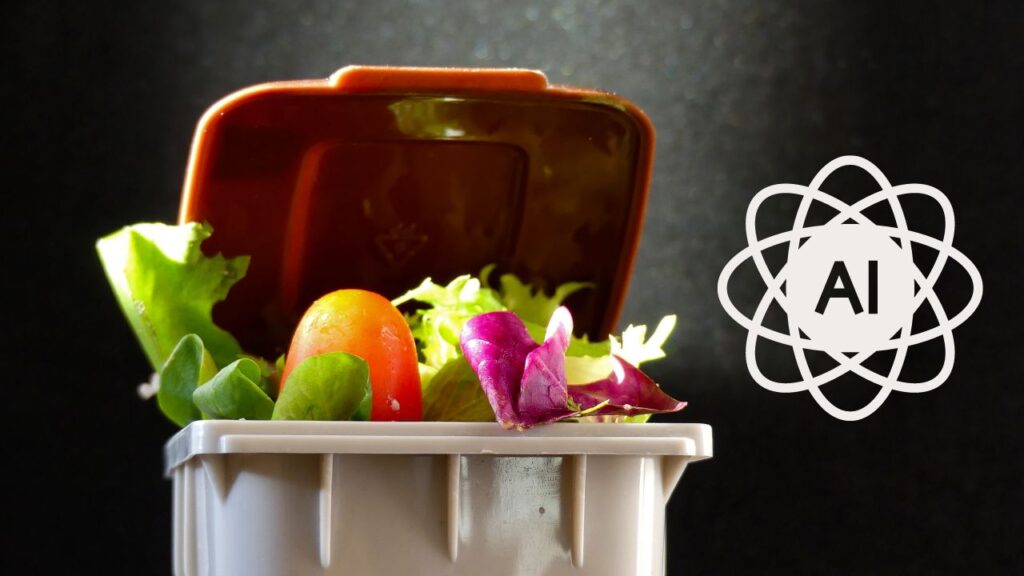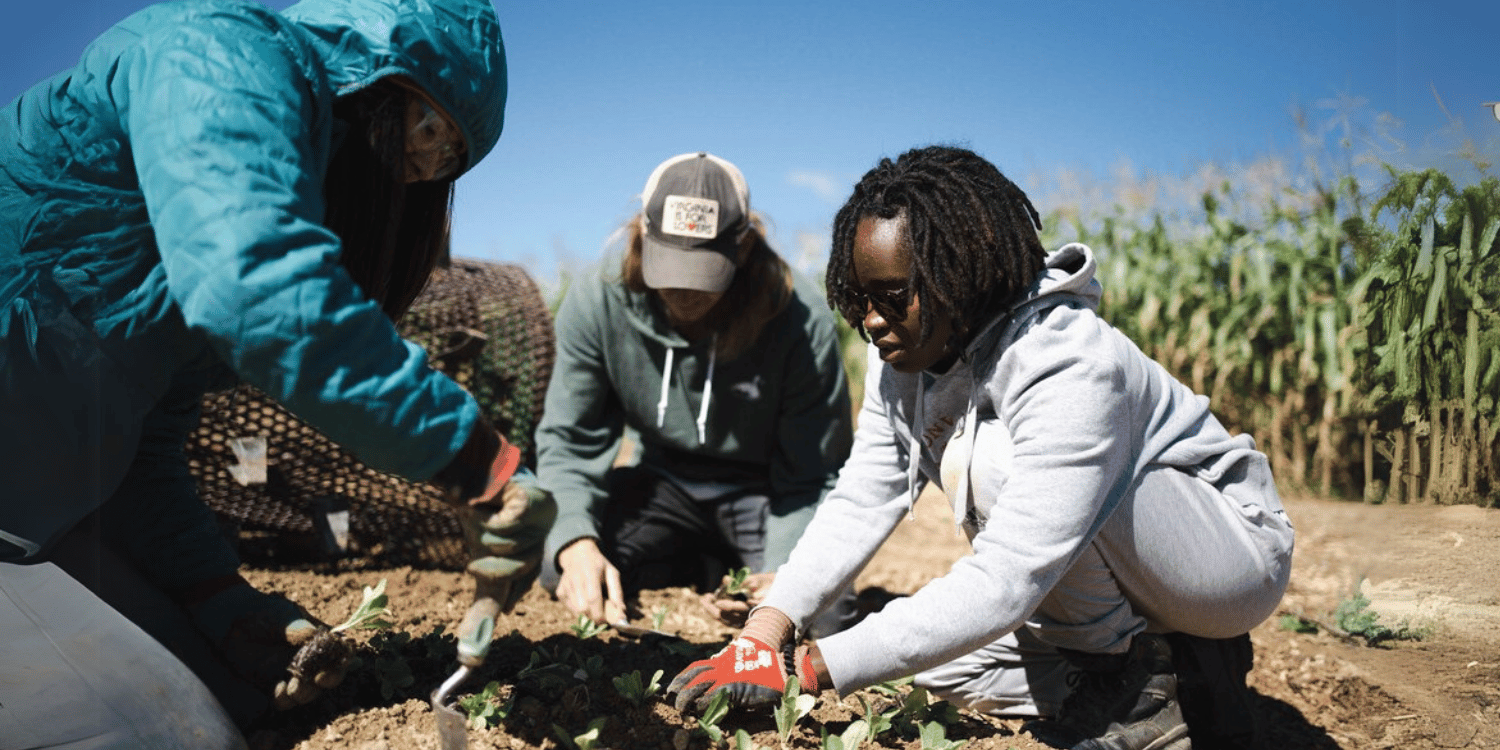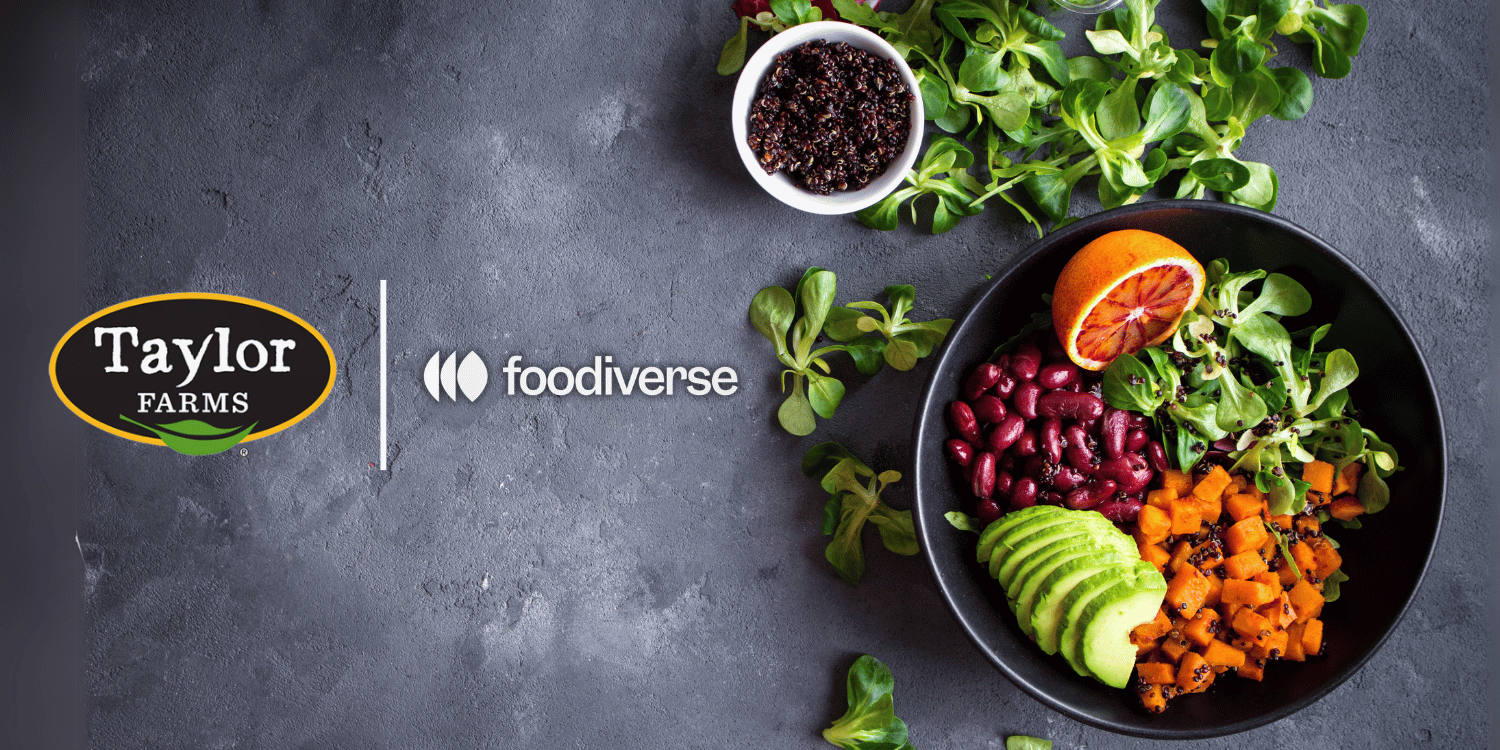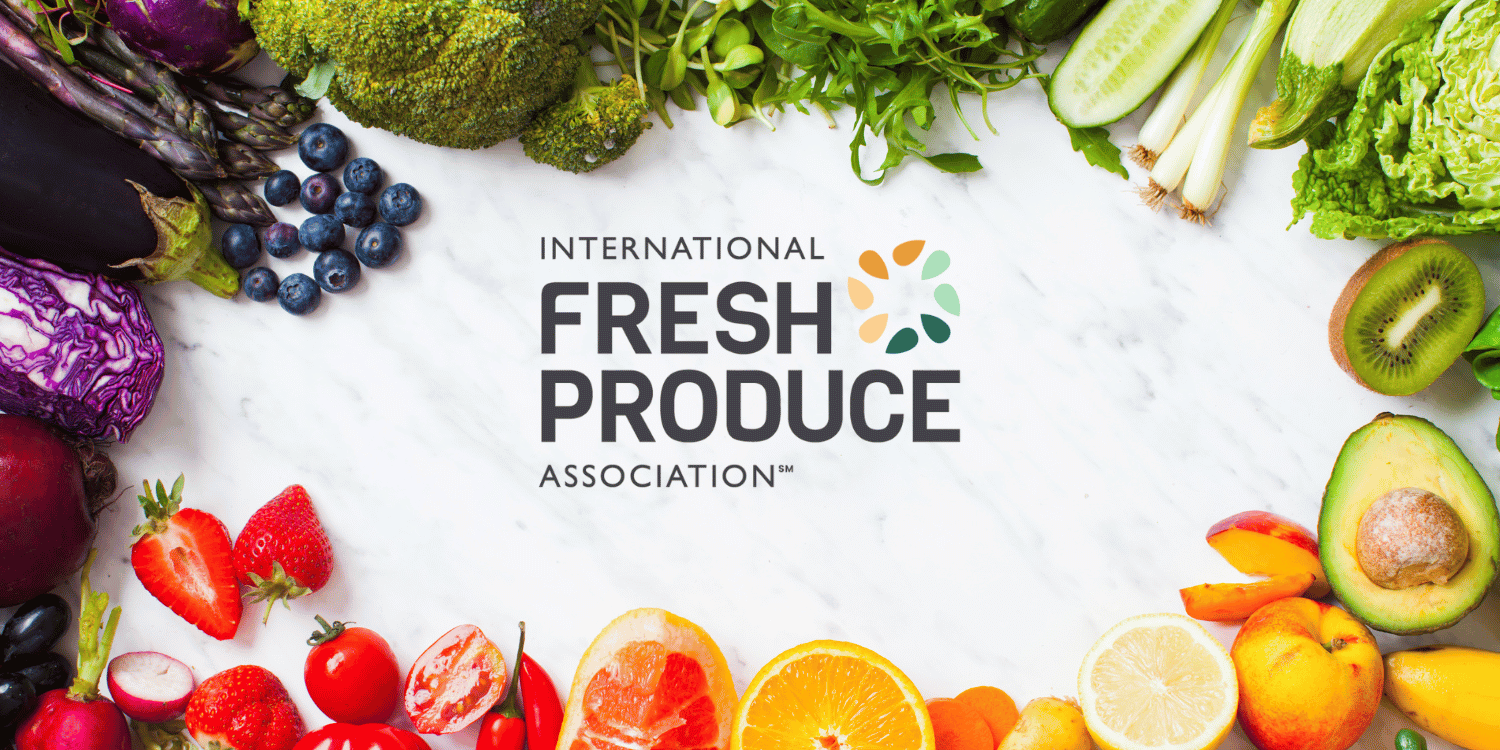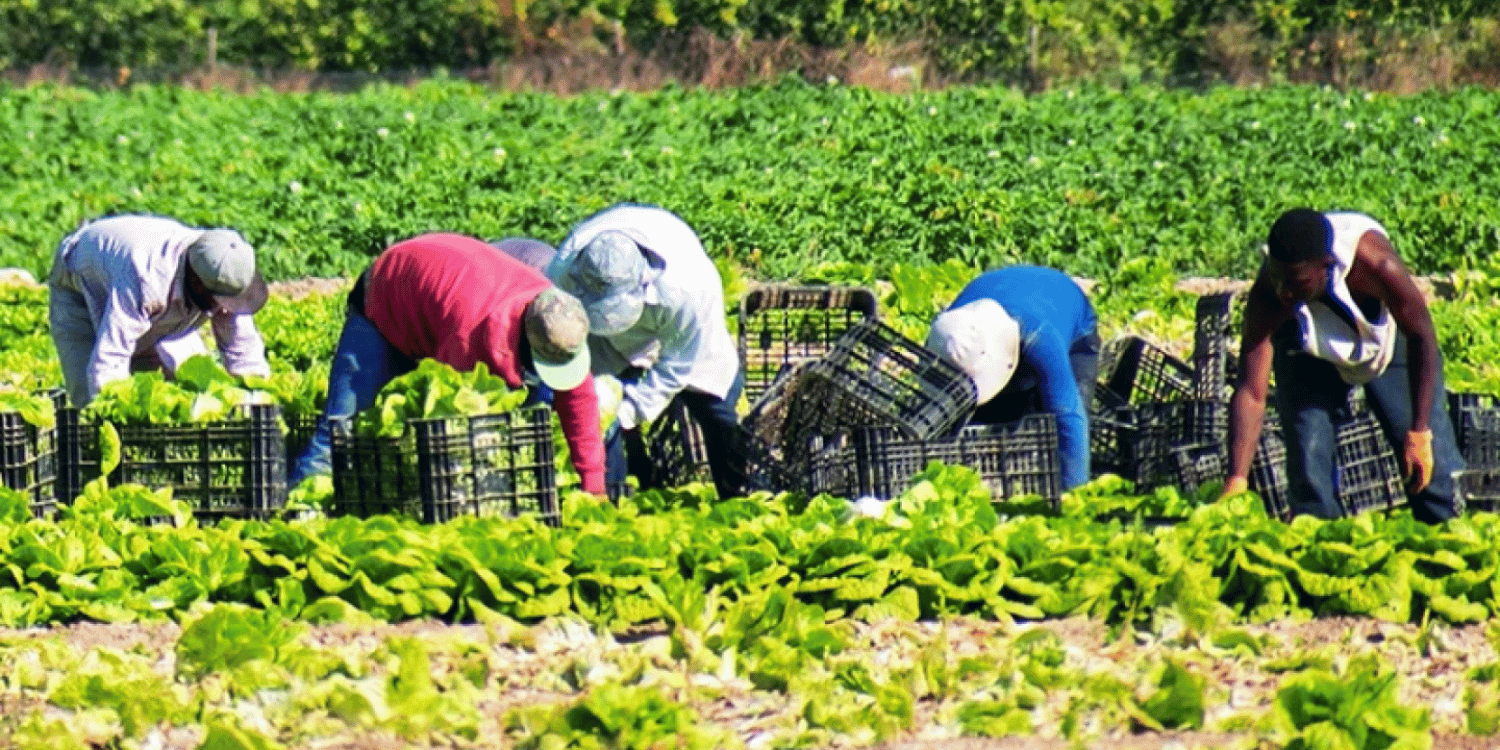Artificial Intelligence (AI) plays a crucial role in mitigating produce waste, a significant global issue.
It streamlines inventory management, thus enabling timely distribution and consumption of produce before it spoils.
AI-powered sorting machines use imaging technologies to detect and segregate rotting or sub-standard produce, ensuring only quality items reach the consumers.
With predictive analytics, AI can forecast demand accurately, reducing overproduction and consequently, waste.
Further, AI can effectively manage the supply chain, reducing transit times and ensuring optimal storage conditions to prolong produce shelf life.
As we all know, AI applications in agri-food sector help save billions of dollars annually while ensuring sustainability.
- AI helps manage inventory, thus reducing produce waste.
- AI-powered sorting machines increase precision and efficiency.
- Predictive analytics via AI aids in waste reduction.
- AI impacts the supply chain, enhancing produce shelf life.
- AI usage in the agri-food sector yields significant savings.
Beyond these important implications of artificial intelligence in managing and reducing produce waste, there is still a plethora of information to explore. We will also be examining the effects of AI technology on agricultural practices and how it contributes to a more sustainable agri-food sector.
Through reading on, you’ll garner insights into the potential benefits of implementing AI technology in everyday farming operations. We will be discussing developments and advancements that revolutionize the way we deal with produce waste, and how these changes positively affect both the industry and environment.
So stick with us. We’re about to explore the significant impacts of this technology, enabling a better understanding of the future of agriculture and waste management. Your understanding of this subject will only deepen and broaden as we continue on.
Contents
- What is Produce Waste?
- Role of AI in Inventory Management
- AI-Powered Sorting Machines Overview
- Predictive Analytics in Reducing Waste
- AI’s Impact on Supply Chain
- How AI Prolongs Produce Shelf Life?
- Savings from AI in Agri-Food Sector
- AI’s Role in Ensuring Sustainability
- Case Studies of AI in Agriculture
- The Bottom Line
What is Produce Waste?
In Short: Produce waste refers to the discarding of fruits, vegetables and other edible items throughout the food supply chain, with estimates suggesting that up to 40% of total food produced globally goes unconsumed. This immense waste has significant environmental implications, wasting resources used in production and contributing to greenhouse gas emissions, while efforts are being made globally to combat this issue and move towards a waste-free future.
Let’s cut to the chase: Produce waste is a significant issue. It refers to the fruits, vegetables, and other edible items discarded during food procurement, production, retailing, and consumption processes.
Now, you might wonder, how sizeable is this issue? Studies estimate that up to 40% of the total food produced globally never gets consumed.
Why does this happen, you may ask? To start with, it stems from the inefficiencies and shortcomings in our food supply chain. Farmers may dispose of “ugly” fruits or vegetables that don’t meet aesthetic standards. Retailers may throw away perishables past their “best by” date. Or, consumers may discard wilted or overripe produce.
Allow me to highlight some key reasons behind produce waste:
- Imperfect Produce: Often, fruits and vegetables considered insufficiently attractive for sale are wasted.
- Expiration Dates: Over-cautiousness about “best by” and “sell by” dates leads to unnecessary discardment.
- Overproduction: Farmers and distributors often overestimate demand, producing excessive surplus that goes to waste.
It may seem trite, but, this waste has serious environmental implications . Decomposing food in landfills generates methane, a potent greenhouse gas, contributing to climate change.
But the damage doesn’t stop there. When we waste food, we also waste all the resources it takes to grow, harvest, transport, and package it. Water, labor, fuel, money, and even love that go into producing our food.
It’s also an issue of ethics. In a world where millions of people go hungry, it’s quite disheartening that resources are wasted in such a manner, isn’t it?
While these facts might seem disheartening, I assure you that this is not a hopeless situation. Increasingly, people, governments, and organizations are recognizing this issue and taking steps to combat it.
Pro Tip: Reduce produce waste by becoming conscious of your consumption, rethinking overcautiousness about “best by” dates, and supporting initiatives that sell “ugly” fruits and vegetables.
From spreading awareness to developing better packaging methods to exploring technologies like Artificial Intelligence, the world is slowly but surely finding ways to minimize produce waste. As the march continues, it’s crucial that we understand its importance and do our part, isn’t it?
Progress may be slow, but it is indeed happening. And every step, no matter how small, takes us closer to a waste-free future.
Role of AI in Inventory Management
In Short: AI significantly enhances inventory management by using historical data and predictive analysis to optimize stock levels and track produce quality, resulting in increased efficiency, reduced wastage and improved customer satisfaction. Its broader implications include revolutionizing sustainability practices in the global produce market and easing the implementation of a waste-free future in inventory management.
Artificial Intelligence, AI, has earned a substantial role in various fields. Remarkably, inventory management has not been any exception to its penetration.
Do you find a hard time imagining AI’s role in Inventory Management? Could the power of AI help in determining when to stock up, and by how much?
In nutshell, AI-empowered systems can forecast purchase demands and sales quite accurately.
They leverage historical sales data and a plethora of other variables to make precise predictions.
The use of advanced machine learning algorithms facilitates the simplification of intricate data analysis.
Moreover, they equip businesses to tackle market volatility and the nuances of perishable produce inventory.
The question arises is how does AI manage this? Let’s consider some methods through which AI shapes and refines the inventory management process:
- By optimizing stock levels to prevent overstocking and understocking scenarios.
- Through predictive analysis for future sales metrics and insights.
- Providing real-time tracking of produce, right from harvest till it hits the market.
Imagine the massive amount of food wastage that technology can save us from! Isn’t that a powerful thought?
Definitely, the implications of implementing AI in inventory management are expansive and transformative.
It drives efficiency and profitability while ensuring minimal waste and enhanced customer satisfaction.
Now, isn’t AI’s role in controlling waste quite evident by now? But that’s not all to it.
It also plays a pivotal part in monitoring produce quality.
AI-enabled systems can assess the quality of fruits and vegetables, significantly reducing the chances of rotten produce reaching the market.
Artificial intelligence reduces overorders as well.
How do you ask? By implementing robust prediction models which can prevent overestimates or underestimates in the ordering process.
Surely, with AI integration, inventory management has become more agile and responsive.
It has the potential to revolutionize how we approach controlling produce waste in the global market.
The above-mentioned instances shed light on how beneficial AI can be in reducing waste in the produce industry.
It’s not just about cutting costs, but about sustainable practices leading to a healthier planet, don’t you think?
Important: AI-empowered systems can accurately forecast purchase demands and sales, optimize stock levels, provide predictive analysis for future sales metrics and insights, and offer real-time tracking of produce, driving efficiency and profitability in inventory management while ensuring minimal waste and enhanced customer satisfaction.
Are we ready to embrace this change for a waste-free future in the realm of produce inventory?
It seems like the answer has already been whispered by the winds of technological advancement.
AI-Powered Sorting Machines Overview
In Short: AI-powered sorting machines utilize advanced image recognition and machine learning algorithms to accurately categorize agricultural produce, reducing waste, and improving product quality. With benefits like increased efficiency and enhanced production, these devices represent a vital step towards sustainable resource management in agriculture.
The issue of produce waste is one that impacts, not just the economic prospects of agricultural ventures, but also the health of our planet. Just imagine, could AI be the key to solve this predicament?
A staggering amount of produce is thrown away based simply on the grounds of aesthetics. Artificial Intelligence, however, presents a potential solution to this wasted potential.
Through the use of AI-powered sorting machines, the categorization of fruits and vegetables no longer solely depends on their aesthetic value. These machines cleverly combine state-of-the-art image recognition technology and machine learning algorithms.
Not only do they identify irregularities and damage, but they also categorize the produce based on predetermined quality thresholds. Does it not seem like a far more equitable system?
This process is crucially time-efficient and reduces human bias in produce quality evaluation. Now, let’s explore the advantages these AI-powered sorting machines bring:
- Significantly reduces waste by correctly identifying and categorizing produce.
- Saves time and reduces labor costs, being an efficient mechanism for sorting.
- Increases the accuracy and consistency of sorting, thus improving product quality.
- Helps collect and analyze data about yield, facilitating enhancements in production.
So you might wonder, how exactly do these machines work? At the core of these machines is computer vision, a subfield of artificial intelligence that is sweeping industries, not just agriculture.
Computer vision technology enables sorting devices to capture accurate images of the produce passing through. From such images, an intricate algorithm derives insights and categorizes the produce accordingly.
Furthermore, these sorting machines are not static. Thanks to machine learning, these systems have the capability to evolve and improve over time. They are designed to learn from every new piece of data they encounter, making them progressively more efficient and accurate in their sorting endeavors.
Pro Tip: Leveraging AI-powered sorting machines in agriculture can significantly reduce waste, increase product quality, enhance production, and save time by accurately identifying and categorizing produce, thus contributing to better resource management and sustainability.
Thus, AI-powered sorting machines carry immense potential to revolutionize the way we handle agricultural produce. With the promise of efficiency, accuracy, and reduction in waste, it hardly seems surprising that many businesses are considering an investment in this novel technology.
While we remain aware that technology alone cannot solve the problem as complex as food wastage, the potential heralded by these intelligent machines should not be understated. They represent a significant step in the right direction towards better resource management and a more sustainable future.
Predictive Analytics in Reducing Waste
In Short: Artificial intelligence (AI) and predictive analytics utilize data, statistical algorithms, and machine learning to reduce food waste by making informed forecasts of production, distribution, and consumption needs. Widespread implementation of this system is challenging due to global food system variations, but small scale successes have encouraged further investment, showing promise for efficient distribution, increased profits, and significant waste reduction.
Imagine an environment where there is minimal produce waste. Wouldn’t that be something?
Artificial intelligence (AI) is our ally in this fight against food waste. With the help of predictive analytics, this could be a reality.
Predictive analytics involves using data, statistical algorithms, and machine learning to identify the probability of future outcomes.
It’s based on the data we have on hand. And in this context, we’re talking about data related to food production, distribution, and consumption.
By using this data, we can make informed forecasts about future needs and consumption rates.
In essence, we can predict how much produce we will need at any given time. This is the concept of supply meeting demand at its apex, isn’t it?
Before we dig in deeper, let’s take a look at how predictive analytics can contribute to reducing waste:
- Accurate crop planning: Knowing what to grow and how much, based on demand forecasts.
- Intelligent distribution: Determining where to send the produce, preventing wastage due to surplus.
- Consumer behavior analysis: Predicting buying patterns and preferences, managing supply accordingly.
Doesn’t this sound like a solution well within our grasp?
Yet implementing this kind of system wide scale takes time, especially considering how vast and varied our global food systems are.
However, smaller scale successes have spurred on further interest and investment in this area.
AI plays a pivotal role in this. By processing vast amounts of data and learning from established patterns, AI helps in optimizing these forecasts.
What’s more, AI can do this far more quickly and accurately than a human analyst.
Food retailers, farmers, and logistics companies are starting to use this technology to predict their operations. And the results are promising.
It’s becoming clearer that predictive analytics and AI are potent weapons in the fight against food waste.
Reducing waste isn’t just good for the environment. It also makes good business sense. Produce lasts longer, distribution is more efficient, and profits increase.
The benefits are colossal, and they all lead to one pivotal overall benefit – less produce waste.
Still, it’s important to remember that while technology can provide powerful tools for change, it’s ultimately up to us to use them responsibly.
Are we ready to fully harness the power of AI to reduce produc waste?
AI’s Impact on Supply Chain
In Short: Artificial intelligence (AI) has transformed traditional farming practices, becoming a critical component of supply chain management. AI’s application includes real-time tracking, predictive analytics, loss reduction, and predicting potential plant diseases, resulting in more efficient farming practices and a significant reduction in food waste.
Without a doubt, artificial intelligence (AI) has significantly shifted traditional farming practices. It has been, hasn’t it?
How it has done this will astound you, as we roll back the curtains to examine it in this article.
AI is now a crucial part of the supply chain management in farming with impressive effects. At the forefront, AI augments inventory management, helping to accurately predict and control produce quantity.
Could you imagine the reduction in waste we’d see when production is guided by the potential market demand and seasonality? This is precisely what AI offers. It’s impressive, wouldn’t you agree?
Let’s dig in into the specifics of what AI has done.
There are key ways by which AI manages the produce supply chain:
- Real-time tracking: AI uses advanced algorithms for real-time tracking of agricultural produce from the field to the market.
- Predictive analytics: AI utilizes historical data to forecast market demand, guiding produce farmers towards more accurate planting schedules.
- Loss reduction: AI significantly curbs post-harvest waste by effective coordinate of transport and storage activities.
These advancements mean that those in the farming business, from the growers to the suppliers, are better informed and able to make strategic decisions. Isn’t that something extraordinary?
Practical technologies, such as AI-operated drones, now monitor crop growth and provides real-time updates. These advancements are importantly important in today’s fast-paced world.
What do you think? While this might seem like something out of a sci-fi movie, it’s quickly becoming a reality.
With the aid of machine learning algorithms, AI can even predict potential plant diseases and pest attacks. Farmers can take corrective action to avert these threats in advance, reducing potential losses.
Have you realized the value of AI in efficiency yet? The ability to foresee risks could drastically cut down on the quantity of produce wasted
A wide adoption and integration of AI technologies across the supply chain could lead to a significant reduction in food waste.
I want you to remember, though, this requires a collective action. From major stakeholders and smallholder farmers to tech companies and policy makers, every player in the industry has a part to play. And that includes you, as a consumer too.
Shifting towards a more sustainable future led by AI isn’t as daunting as it may sound, is it? Now, imagine for a moment the positive implications on global food security when we embrace AI.
Important: AI is now a crucial part of the supply chain management in farming, notably enhancing inventory management, reducing waste, and using predictive analytics to guide planting schedules.
Undeniably, the transformative potential of AI in controlling produce waste within the food supply chain is incredible.
Hope you find this enlightening and thought-provoking. Keep in mind, the journey towards sustainable farming is a collective effort.
How AI Prolongs Produce Shelf Life?
In Short: Artificial Intelligence (AI) has revolutionized the food industry by lengthening the shelf life of produce and reducing waste through AI-based quality control systems, AI-controlled storage facilities, and assisting in supply chains. AI is applied in various stages, from farm to table, including crop health monitoring with drones, optimizing storage conditions, supply and demand evaluation, and route planning to ensure fresh delivery.
Quite intriguing to note is the manner in which Artificial Intelligence (AI) has walked into our kitchens and grocery aisles, don’t you think? This innovative technology has been massively influential in prolonging the shelf life of produce, thereby reducing food waste.
A good starting point is the utilization of AI-based quality control systems. These systems enable the inspection of products, identifying defects and mature fruits earlier than the human eye can.
This ensures that only top-notch, fresh items hit the shelves. Isn’t it amazing to think that our favorite apples and bananas are selected and sorted by AI technology?
Even before the produce arrives at the grocery store, it attracts AI’s attention. Farms are now using AI-powered drones to monitor the health of their crops.
These drones can spot disease or pest infestation early on, thus preventing bigger losses. A real game-changer in modern farming, isn’t it?
Let us now tread into the fascinating realm of AI-controlled storage facilities. These facilities are designed to create optimal conditions that reduce produce spoilage. Imagine, strawberries getting the right amount of sunlight or spinach getting the exact amount of water they need, all thanks to AI.
Here are some specific ways in which AI helps to maintain the freshness of produce:
- Optimal Temperature Maintenance: AI systems adjust the storage temperature to ensure the produce remains fresh for a longer period.
- Predictive Analysis: AI helps in analyzing previous data to forecast the best conditions for produce storage.
- Automation: AI implements automatic adjustments in the storage conditions when changes are detected in the produce.
See, AI isn’t only about robots in sci-fi movies or Alexa in living rooms, it has a considerable role in food waste reduction, too. Do you see now how AI is steadily transforming every facet of our lives, including what we eat?
Furthermore, AI models are operational in assessing consumer demand and managing supply chains. This helps to prevent overstocking, thus reducing the risk of product spoilage.
At the same time, AI models help retailers establish efficient delivery routes. They ensure that the produce reaches consumers while it’s still fresh, directly impacting food shelf life.
AI has come to our rescue in curbing food waste, both at home and in the business. It has transformed how we grow, store, and deliver fresh produce. Empowering farmers, retailers, and consumers all at once.
It’s an exciting time to be alive and witness such technological advancements, wouldn’t you agree? As we embrace a future of sustainable living, the role of AI seems to be intrinsically woven into its fabric. Bear in mind, the conversation on AI and food waste reduction is just beginning. There’s a lot more to look forward to.
Savings from AI in Agri-Food Sector
In Short: AI dramatically transforms the agri-food sector by optimizing production, increasing productivity, and minimizing waste through data-driven farming decisions and predictive analytics. It also enhances sustainability through resource optimization, diversity in food supply, and reductions in energy and water consumption.
When we consider the agri-food sector, the advent of Artificial Intelligence (AI) represents a leap as great as the first agricultural revolution itself. AI, through its learning algorithms and automation capabilities, has the potential to dramatically transform the sector, optimizing production and minimizing waste.
The most significant advantage is increased productivity. AI enables farmers to make data-driven decisions, cutting down on inefficiencies, and ensuring optimal use of resources. It’s an innovative way to maximize yield, isn’t it?
Another significant area where AI contributes is waste reduction. Traditionally, agricultural wastage has been largely uncontrolled. With AI, we are now able to predict and prevent excessive wastage. The question to ask is, are we ready to harness the power of AI to mitigate such serious consequences?
AI is capable of identifying patterns and predicting outcomes with a level of precision that is incomprehensible to the human mind. This implies a reduction in unnecessary consumption of resources and a significant reduction in waste
Let me illustrate this with an example. Imagine an apple orchard where every tree, every branch, every piece of fruit is monitored by AI surveillance. When the apples are ripe for harvesting, the AI can trigger the process. Wouldn’t that save a significant amount of fruit from going to waste?
Here are a few other ways in which AI enables savings in the Agri-Food sector:
- Through precision farming, AI technology can analyze soil health, climatic conditions, and crop health. This helps farmers make informed decisions about planting, fertilizing, and harvesting.
- AI can also aid with disease detection in plants. Early detection and diagnosis can help prevent outbreaks, reducing waste and saving cost on crop replacement.
- AI-powered supply chain solutions can bring efficiency from farm to consumers, reducing storage and transportation losses.
But, it’s not just about reducing waste and saving money. It’s also about optimizing the use of the earth’s resources for sustainable agriculture practices. AI can play a critical role in making agriculture more environmentally friendly.
Energy efficiency is another aspect where AI comes into picture. From monitoring water levels to adjusting irrigation systems, AI can reduce unnecessary energy and water consumption. AI can help us be smarter with the resources we have, don’t you agree?
AI also helps with crop diversity. By analyzing market trends and dietary needs, AI can guide farmers on what crops to plant. This not only increases profitability but also ensures a diverse and healthy food supply.
Though it seems like an enormous task, the benefits of AI in the Agri-food sector are impossible to ignore. It’s not just about improving our bottom line, but also about ensuring the sustainability of our planet. Acting swiftly to recognize and act upon these opportunities is more than worth our while, would you not agree?
AI’s Role in Ensuring Sustainability
In Short: Artificial Intelligence (AI), through technologies like machine learning and neural networks, is directly enhancing sustainable food production by accurately predicting harvest yields and minimizing waste. AI implementations in autonomous devices also aid in managing crops more intelligently and optimizing resources, offering significant improvements in environmental preservation while demonstrating a promising role for AI in ensuring a sustainable future.
When it comes to producing food without compromising the environment, enter the role of artificial intelligence. It is indeed impressive how far technology has come, don’t you think?
Let’s take a closer look at how AI directly contributes to this vision of sustainable food production. After all, shouldn’t we all aim for progress hand in hand with preservation?
Emerging AI technologies such as machine learning and neural networks are now being utilized in predicting harvest yields. This initiative helps balance production and demand, thus avoiding wastage.
Open your mind to the amazing benefits of AI. Would you believe that AI even takes form in autonomous drones and robotic arms?
These autonomous devices cater to the precise and efficient handling of produce. They can pick, sort, and package crops, eliminating damages that lead to wastage.
Isn’t it fascinating that our innovations have grown to such extent? Yet it is equally important to realize that the value of these technological advancements stems from their purpose.
Emphasizing this, AI isn’t all about its bells and whistle, there is indeed a serious intention behind it.
Are you curious about some of the tangible goals poised in implementing AI in sustainable produce handling? Let’s dig in into this:
- Firstly, minimizing food wastage by ensuring output matches demand.
- Secondly, reducing the use of pesticides through intelligent crop management.
- Thirdly, optimizing water usage by identifying exact irrigation needs of crops.
Imagine if we can achieve all these with AI. This could lead to an immense improvement in environmental preservation, wouldn’t it?
Moreover, AI-powered solutions provide a brilliant platform for continuous learning and improvement. They analyze the data, then learn from it to maximize efficiency.
But, why stop there? Isn’t it worthwhile to ponder how AI would continue to improve in the future?
The potential for AI in sustainable food production doesn’t just stop at present realizations. Is it too far-fetched to imagine an even more efficient system in the future?
Pro Tip: Utilize AI technologies like machine learning and neural networks in food production to predict harvest yields, balance output with demand, and minimize waste.
I think this really attests to the promising role of AI in securing a sustainable future for our planet. Have you ever thought about this before?
In our pursuit of advancement, let us not forget the importance of sustainability. If not for ourselves, then for our future generations.
Case Studies of AI in Agriculture
In Short: AI is significantly reducing food waste in agriculture through initiatives like Microsoft’s FarmBeats project, using AI, IoT, and cloud technology to optimize resources. Companies like TechMahindra, Ripe.io, and Zest Labs also employ automation and AI for aspects like pest control, resource optimization, quality control, and real-time data tracking, providing proactive solutions to food wastage.
When considering ways to minimize food waste, we often overlook the role that cutting-edge technology, like Artificial Intelligence (AI), plays in this field. Isn’t it astounding that we have machine brains helping us control food waste?
Take the prominent example of Microsoft’s FarmBeats project for instance. A flagship of AI contribution to agriculture, this initiative helps farmers make data-driven decisions.
Utilizing AI, IoT, and cloud technology, FarmBeats makes farming more ‘intelligent’. Wouldn’t you agree that preemptive action is better than post-hoc solutions when it comes to avoiding excess and waste?
Better predictions mean less waste. Additionally, FarmBeats can predict the optimal quantity of resources needed for farming, reducing both expenditure and waste.
Let’s not forget about companies like TechMahindra. More specifically, their HUB (Horticultural Universal Board) project.
The HUB uses Automation and AI to provide a technology-driven solution to the most pressing challenges faced in agriculture. Especially in the horticulture sector.
Now, don’t you think these applications of AI are making a real difference in the field of agriculture? Let’s dig in a bit deeper. Here are some of the primary aspects where AI is creating an impact:
- Pest and Disease Control: AI-based prediction models help identify potential disease and pest threats.
- Resource Optimization: AI can predict the exact amount of water, fertilizer, and other resources required, thereby minimizing waste.
- Quality control: AI algorithms can ensure optimal quality of produce by monitoring growth and ripening stages.
With companies like Ripe.io, there’s also real-time data tracking. They are redesigning the future of food handling with ‘the Internet of tomatoes’.
Ripe.io uses blockchain and AI to track a tomato’s journey. From farm to table, every single element is recorded.
In turn, this data can help reduce food waste. It can alert grocers about optimal selling times, predict shelf life, and provide advice on storage methods.
Simultaneously, companies like Zest Labs offer solutions like Zest Fresh. This solution uses AI to optimize the fresh food supply chain.
Such a system allows for proactive waste reduction by improving the accuracy of the produce expiration dates. Pretty advanced, don’t you think?
Important: AI is already heavily influencing our fight against food wastage in the agriculture sector through cutting-edge technologies like Artificial Intelligence (AI), which aids in minimizing food waste, optimizing resources, and improving quality control.
Let me tell you, the application and impact of AI in controlling produce waste isn’t mere theory. As these case studies show, AI is already heavily influencing our fight against food wastage in the agriculture sector.
While pondering over this, we can’t help but raise the question, what will be the next innovation in AI for agriculture? And how much more impact can it have? The possibilities are truly exciting.
The Bottom Line
Produce waste is a significant environmental and economic issue, which artificial intelligence aims to alleviate by providing innovative solutions.
Adding artificial intelligence to inventory management can facilitate more accurate forecasting and reduce waste from unsold or spoiled products.
The advent of AI-Powered sorting machines have revolutionized the sorting process by ensuring only the freshest and highest quality produce reaches the consumer, thus minimizing waste.
Predictive analytics, a subset of AI, plays a pivotal role in reducing waste by predicting demand accurately, ensuring supply chains operate in a way that minimizes produce wastage.
Through accurate tracking and forecasting tools, AI is impacting the supply chain positively, streamlining processes, reducing waste, and improving efficiency.
AI can increase the shelf life of produce through intelligent monitoring and control of storage environments, preventing premature spoilage and thereby reducing waste.
In the agri-food sector, the application of AI technologies can potentially lead to substantial savings by optimizing resource allocation and reducing waste.
Beyond improving efficiency and reducing waste, AI plays a foundational role in shaping a sustainable future for the agricultural sector, supporting efforts to protect our planet while feeding the growing population.
Various case studies in agriculture demonstrate AI’s potential in significantly improving our capacity to grow food sustainively while effectively controlling waste.
Overall, the role of AI in controlling produce waste is becoming increasingly critical, as it provides viable solutions addressing economic, environmental, and sustainability challenges in the agri-food sector.

